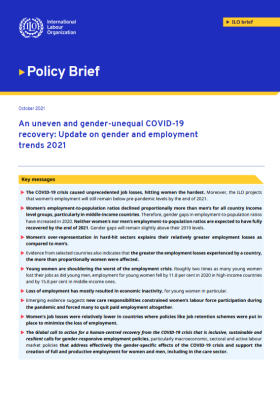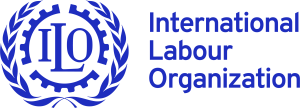An uneven and gender-unequal COVID-19 recovery: Update on gender and employment trends 2021
Key Messages
- The COVID-19 crisis caused unprecedented job losses, hitting women the hardest. Moreover, the ILO projects that women’s employment will still remain below pre-pandemic levels by the end of 2021.
- Women’s employment-to-population ratios declined proportionally more than men’s for all country income level groups, particularly in middle-income countries. Therefore, gender gaps in employment-to-population ratios have increased in 2020. Neither women’s nor men’s employment-to-population ratios are expected to have fully
recovered by the end of 2021. Gender gaps will remain slightly above their 2019 levels.
- Women’s over-representation in hard-hit sectors explains their relatively greater employment losses as compared to men’s.
- Evidence from selected countries also indicates that the greater the employment losses experienced by a country, the more than proportionally women were affected.
- Young women are shouldering the worst of the employment crisis. Roughly two times as many young women lost their jobs as did young men, employment for young women fell by 11.8 per cent in 2020 in high-income countries and by 15.8 per cent in middle-income ones.
-Loss of employment has mostly resulted in economic inactivity, for young women in particular.
-Emerging evidence suggests new care responsibilities constrained women’s labour force participation during the pandemic and forced many to quit paid employment altogether.
-Women’s job losses were relatively lower in countries where policies like job retention schemes were put in place to minimize the loss of employment.
-The Global call to action for a human-centred recovery from the COVID-19 crisis that is inclusive, sustainable and resilient calls for gender-responsive employment policies, particularly macroeconomic, sectoral and active labour market policies that address effectively the gender-specific effects of the COVID-19 crisis and support the creation of full and productive employment for women and men, including in the care sector.



